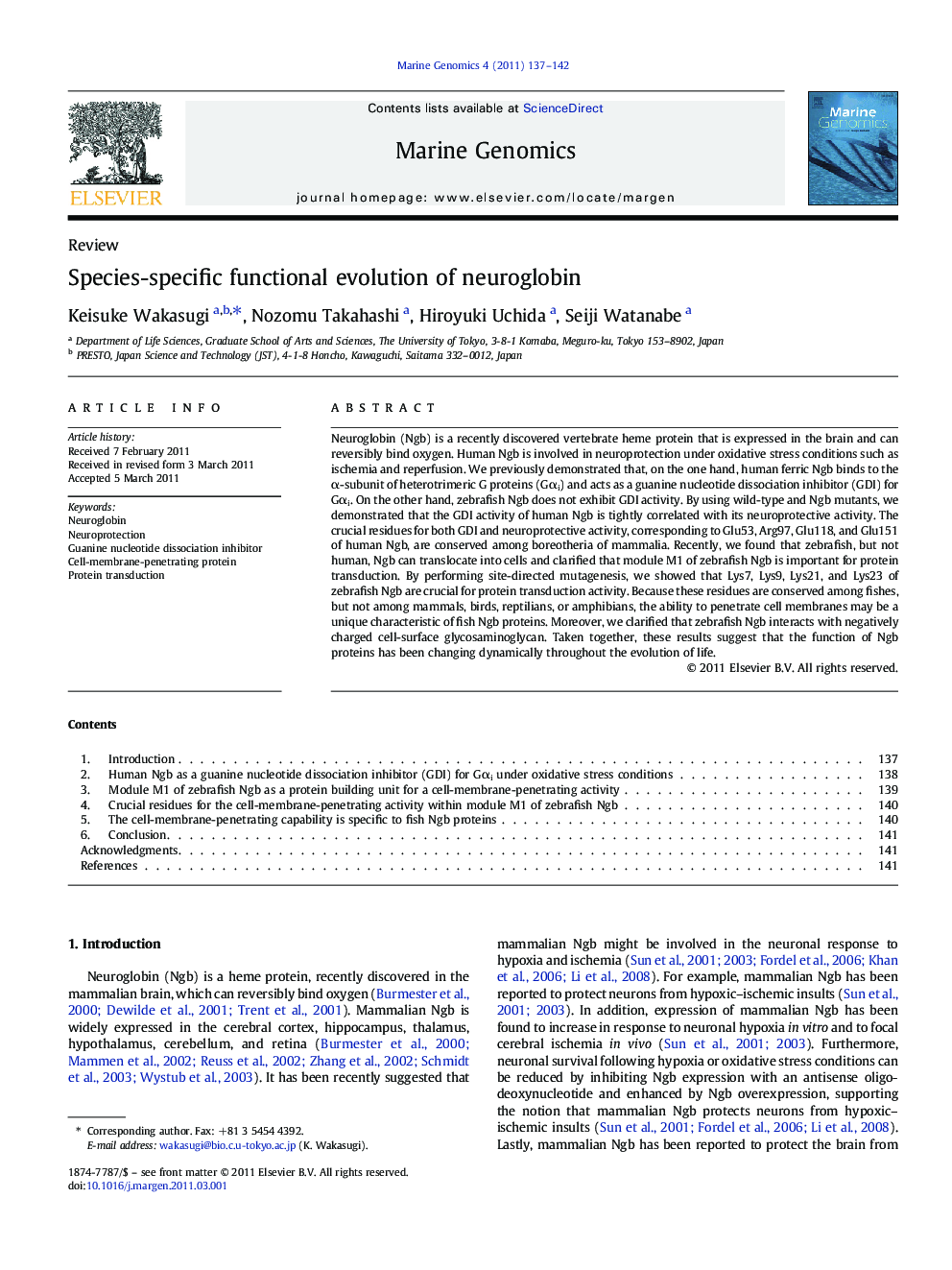| Article ID | Journal | Published Year | Pages | File Type |
|---|---|---|---|---|
| 2058305 | Marine Genomics | 2011 | 6 Pages |
Neuroglobin (Ngb) is a recently discovered vertebrate heme protein that is expressed in the brain and can reversibly bind oxygen. Human Ngb is involved in neuroprotection under oxidative stress conditions such as ischemia and reperfusion. We previously demonstrated that, on the one hand, human ferric Ngb binds to the α-subunit of heterotrimeric G proteins (Gαi) and acts as a guanine nucleotide dissociation inhibitor (GDI) for Gαi. On the other hand, zebrafish Ngb does not exhibit GDI activity. By using wild-type and Ngb mutants, we demonstrated that the GDI activity of human Ngb is tightly correlated with its neuroprotective activity. The crucial residues for both GDI and neuroprotective activity, corresponding to Glu53, Arg97, Glu118, and Glu151 of human Ngb, are conserved among boreotheria of mammalia. Recently, we found that zebrafish, but not human, Ngb can translocate into cells and clarified that module M1 of zebrafish Ngb is important for protein transduction. By performing site-directed mutagenesis, we showed that Lys7, Lys9, Lys21, and Lys23 of zebrafish Ngb are crucial for protein transduction activity. Because these residues are conserved among fishes, but not among mammals, birds, reptilians, or amphibians, the ability to penetrate cell membranes may be a unique characteristic of fish Ngb proteins. Moreover, we clarified that zebrafish Ngb interacts with negatively charged cell-surface glycosaminoglycan. Taken together, these results suggest that the function of Ngb proteins has been changing dynamically throughout the evolution of life.
Research highlights► GDI activity of human Ngb is tightly correlated with its neuroprotective activity. ► Crucial residues for GDI activity are conserved among boreotheria of mammalia. ► Zebrafish, but not human, Ngb can translocate into cells. ► Crucial residues for its transduction activity are conserved only among fishes. ► Function of Ngb proteins has been changing dynamically throughout evolution of life.
